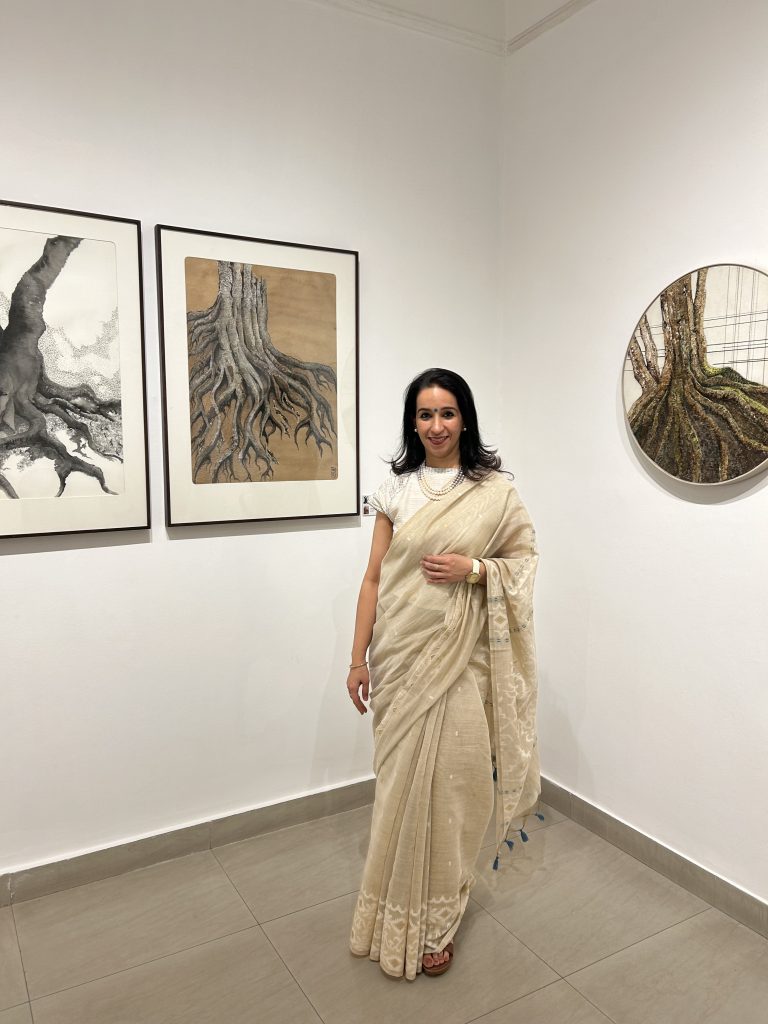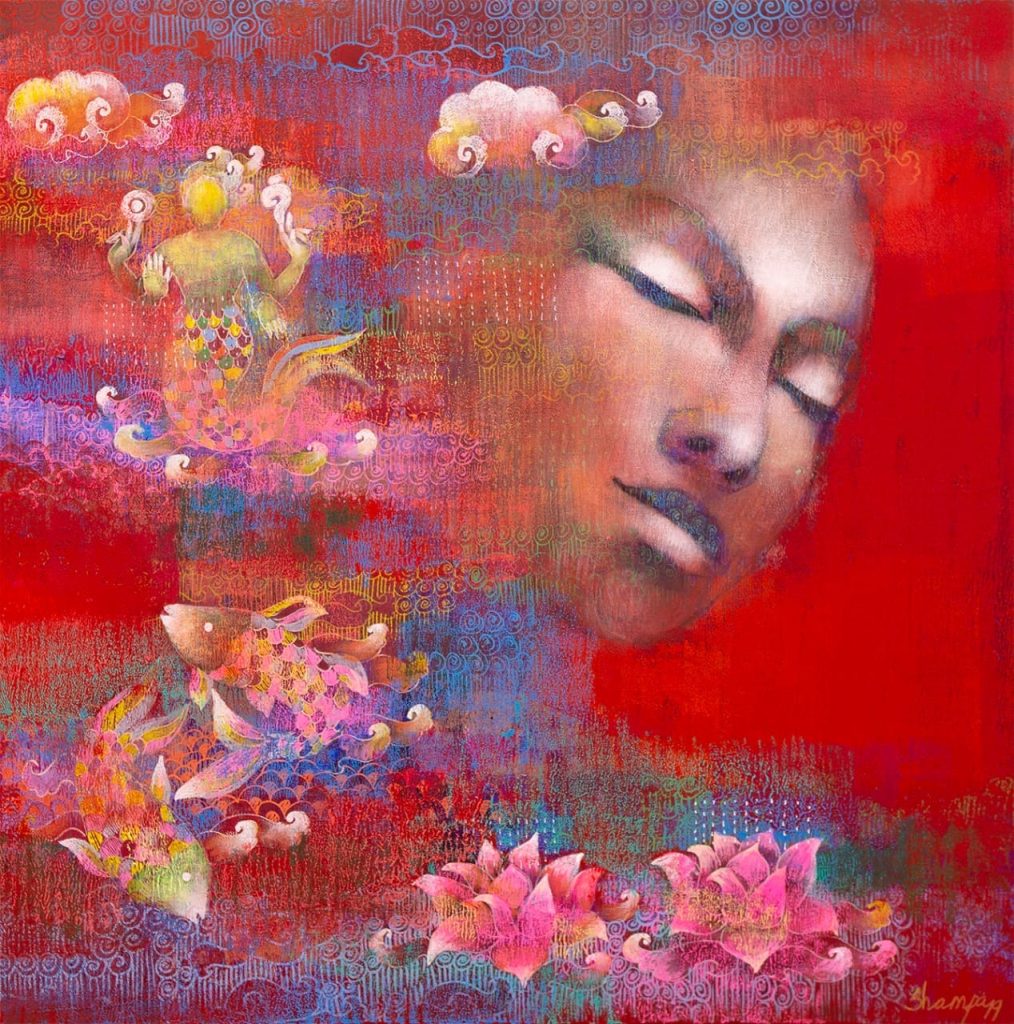As humanity flourishes and expands its reach, it unwittingly encroaches upon the habitats of countless species, eroding their very identities and claiming their homes as its own. The relentless pursuit to discover new habitats and venture into uncharted territories is causing the tragic demise of countless lives that depend entirely on the natural world. Nature sustains our very existence, yet we persist in our audacious attempt to manipulate its innate core and exploit it for our self-serving endeavours.
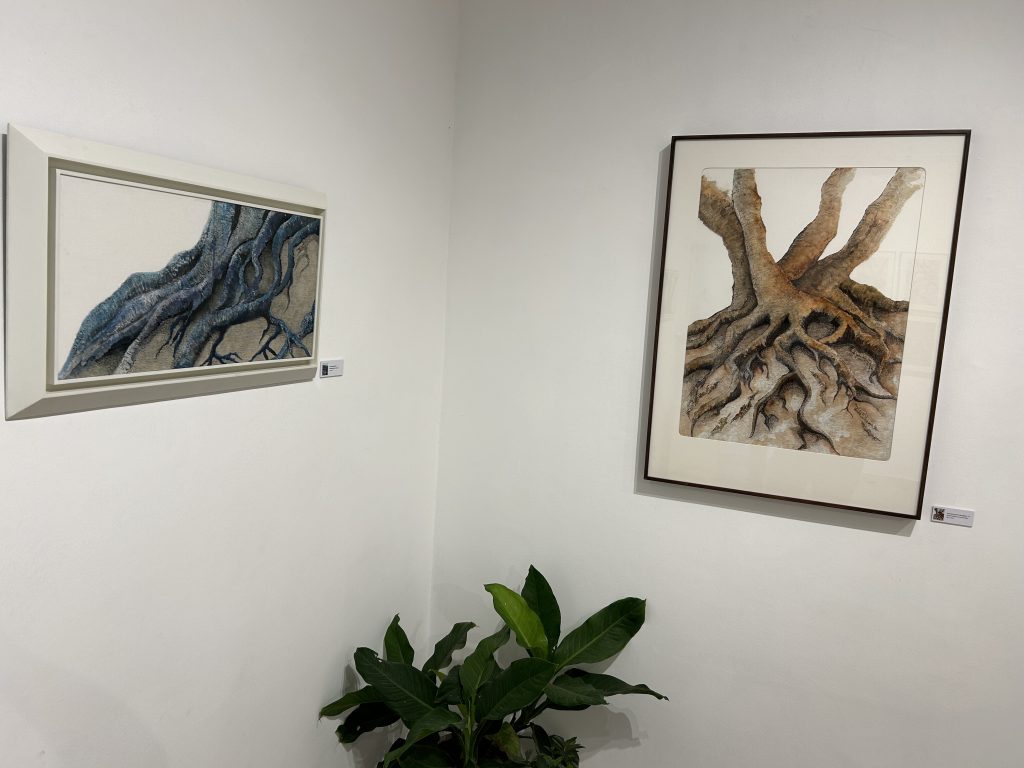
Triveni Kala Sangam has recently launched a captivating exhibition showcasing the exquisite works of Ritu Bhutani. In her art, Bhutani introduces a fascinating hypothesis that delves into the profound exploration of the natural habitat. Her masterpieces beautifully depict the intricate “roots” of trees, symbolizing their vital role in supporting other creatures. Understanding the significance of roots is crucial as they serve as a compelling visual representation, symbolizing the very essence of nature on which everything relies. The breathtaking beauty of nature prompts us to wonder if more space is truly necessary for us to occupy. Our approach to creation ultimately contributes to the destruction of those organic forms that are needed the most for survival.
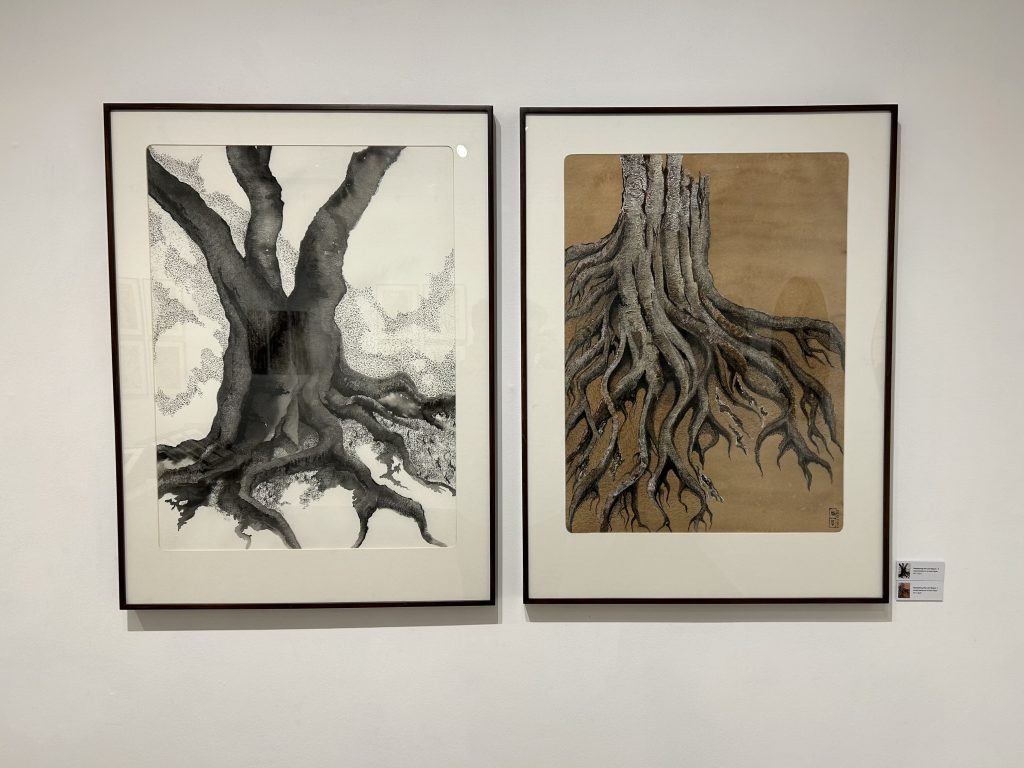
When asked about her process, she explained “It all started from my experiences on various holidays that I took. It all began in Andaman and Nicobar Islands, in the sense that I came across huge redwood trees and the native population called it Paduk trees. Trees were very huge, a hundred feet plus, and they had these roots coming out of the ground. As I gazed upon the island, I marvelled at how its very being had been consumed by a labyrinth of roots. It was an awe-inspiring reflection of nature’s indomitable power to reclaim what is rightfully hers. It is truly disheartening to witness the loss of nature’s rightful space due to relentless human intervention that continues to eradicate every trace of green. Nature retaliates, reclaiming the space that was lost. Most of the time I work with mixed mediums only, so it could be charcoal, graphite, acrylic, and Inks. I have this thing for very fluid mediums. Most of my work has ink layering so, it could be coffee layering and then the layer of ink. There is a dry medium as well where I use pastels. So, the medium comes to me organically, I never plan for that but it comes naturally during the process.”
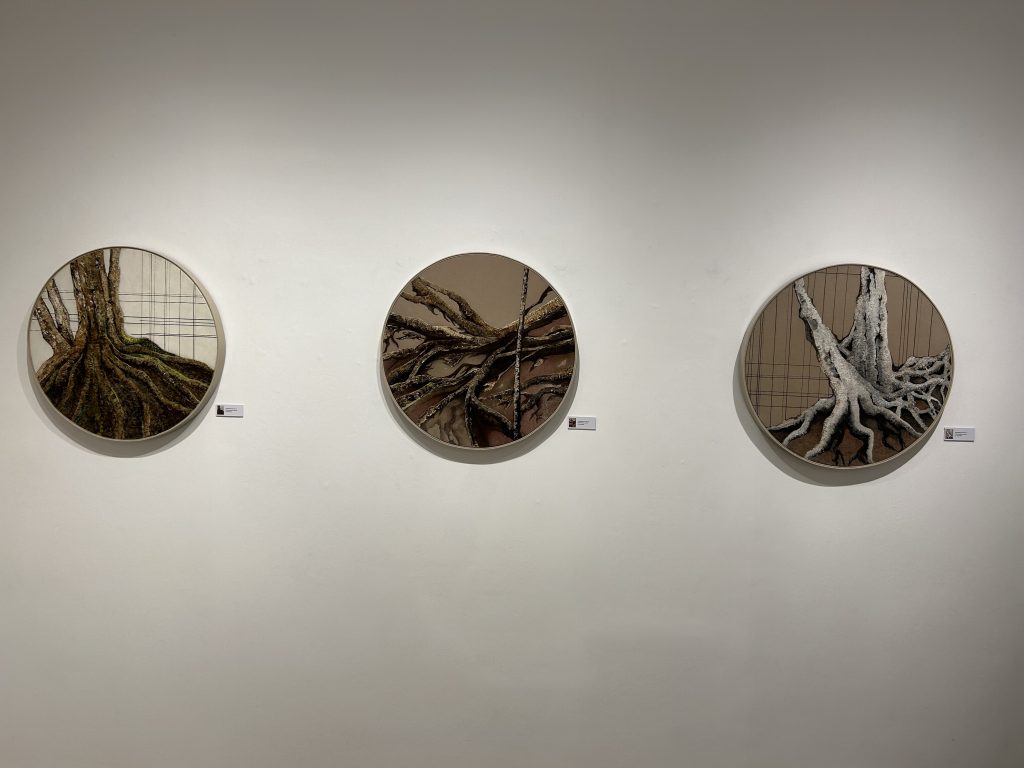
The primary objective of the show ‘Aranya: Reclaiming the Lost Space’ is to shift focus from overpowering industrialization to a harmonious blend of diverse life forms. It is a way to show reverence and acknowledge the strength and vigour of forests, their resilience and capacity to thrive, and the wide range of organisms that rely on their existence. Her artwork appears more complex and captivating due to her clever utilization of lines. By skillfully incorporating various hues and materials, the artwork becomes more captivating. Her artwork’s creative use of empty spaces thoroughly impressed us. The selection of appropriate creative distortions gives the illusion of a three-dimensional appearance. Despite its initial simplicity, the painting reveals numerous intricate components. These artworks guide us to utilize space.
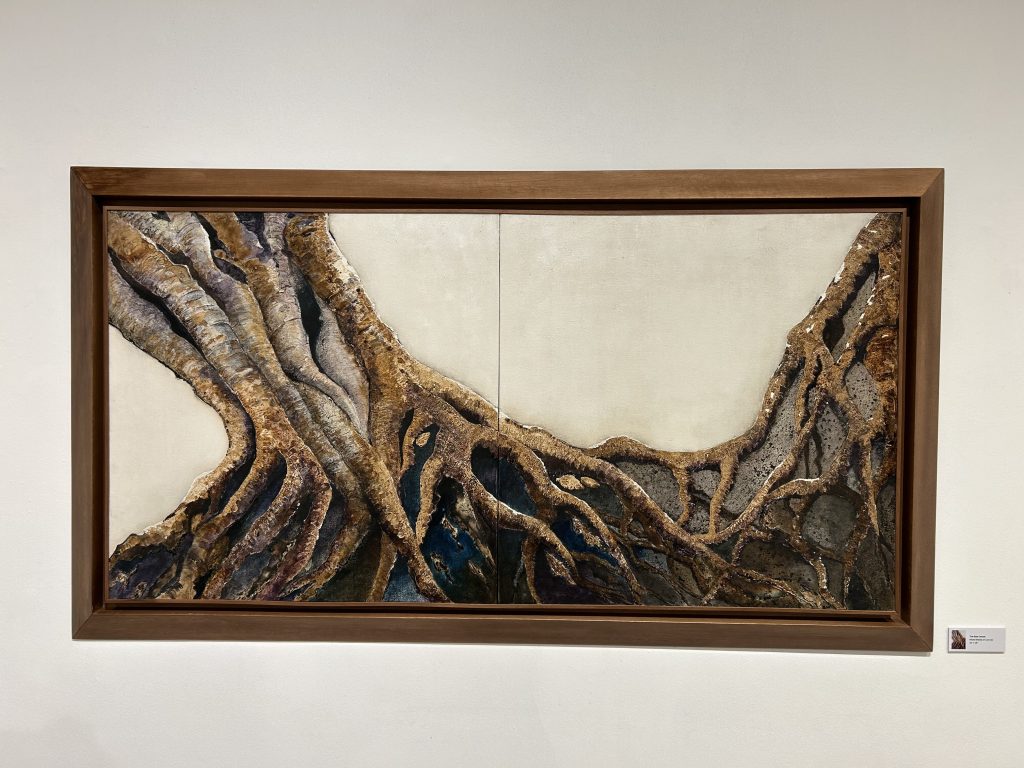
When asked about the impact of human interventions in nature, she responded, “We’re accommodating nature while city planning people think that they will accommodate green spaces, but that’s not the natural way. It’s nature that is acommodating us. It is something that we’re forgetting, so we’re making our way to natural habitats. And in the process, many animal and bird species go extinct because their world has been lost. I guess this is something that people need to understand and wake up to the reality that very soon we will not be left with anything at all. This is something that I want to convey, and there are no expectations out of it. Whenever you portray a tree, most of people paint green and beautiful bloom flowers but you need to understand that the roots are important as they hold the whole tree together.”
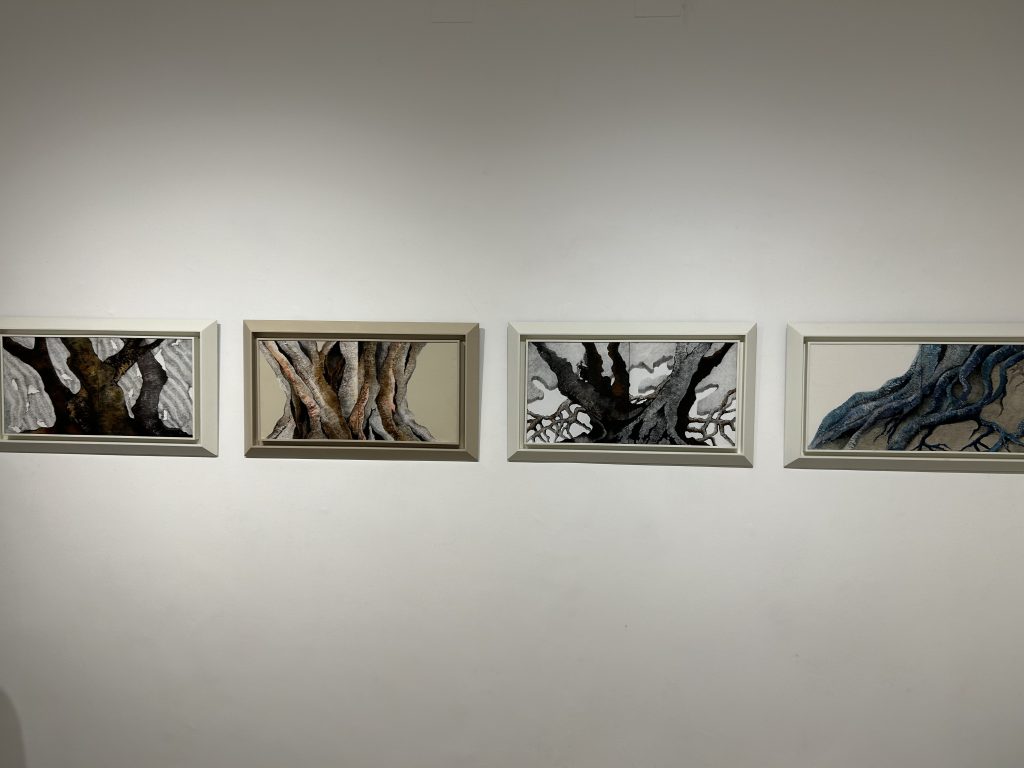
She aims to produce visual compositions that question the notion that economic advancement is the ultimate indicator of accomplishment. A significant catastrophe is imminent, necessitating our attention on environmental preservation to avoid it. In these paintings, the trees represent nature’s prowess to restore its presence within the ecosystem.
Photo Courtesy – Ritu Bhutani

Contributor

